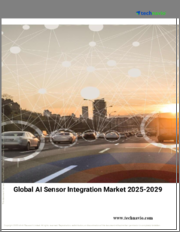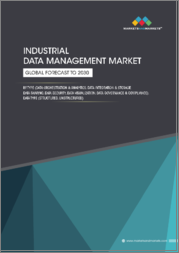
|
시장보고서
상품코드
1560973
데이터 시각화 시장 보고서 : 컴포넌트별, 조직 부문별, 도입 모드별, 기업 규모별, 최종사용자별, 지역별(2024-2032년)Data Visualization Market Report by Component, Organizational Department, Deployment Mode, Enterprise Size, End User, and Region 2024-2032 |
||||||
세계의 데이터 시각화 시장 시장 규모는 2023년에 39억 달러에 달했습니다. 향후 IMARC Group은 2024-2032년 성장률(CAGR)은 7.8%를 보이며, 2032년에는 78억 달러에 달할 것으로 예측하고 있습니다.
데이터 시각화란 데이터와 정보를 그래프, 지도, 차트 등의 시각적 툴로 표현하는 것을 말합니다. 대시보드, 스코어카드, 분석, 빅데이터, 비즈니스 인텔리전스(BI) 솔루션 등을 활용해 다양한 동향과 패턴을 파악할 수 있습니다. 데이터 시각화는 웹 트래픽 분석, 마케팅 캠페인 최적화, 헬스케어 데이터 처리, 재무 동향 모니터링 등에 도움이 되며, 의사결정을 개선할 수 있는 의미 있는 인사이트를 도출할 수 있습니다. 이 툴은 고객 선호도를 파악하고 기존 및 신제품 수요 및 공급을 유지하는 데 사용되는 표준화된 시각화 기능을 제공합니다. 그 결과, 은행, 금융 서비스 및 보험(BFSI), 정보기술(IT), 통신, 소매, 교육, 제조 등 다양한 산업에서 널리 활용되고 있습니다.
데이터 시각화 시장 동향 :
소프트웨어 자문 및 예측 분석을 위한 시각화 플랫폼의 채택 증가는 시장 성장을 가속하는 주요 요인 중 하나입니다. 또한 대화형 단순화된 데이터 투영에 대한 조직 수요가 증가하면서 시장 성장을 가속하고 있습니다. 중견 및 대기업은 스마트폰, 데스크톱, 태블릿, 웹 기반 용도를 통해 데이터 시각화 시스템을 광범위하게 활용하여 맞춤형 보고서 및 데이터 그래프 표시를 생성하고 있습니다. 이에 따라 소셜미디어 플랫폼, 이메일 서비스 프로바이더, 스마트 기기에서 얻은 비정형 데이터를 기반으로 한 대화형 대시보드에 대한 요구가 증가하고 있는 것도 시장 성장에 기여하고 있습니다. 또한 커넥티드 디바이스와 인공지능(AI) 통합, 클라우드 컴퓨팅, 가상현실(VR) 솔루션 등 다양한 기술 발전도 시장 성장을 가속하는 요인으로 작용하고 있습니다. 기업은 이러한 기술을 통해 비용 효율적이고 확장 가능한 데이터 분석과 BI를 통한 핵심성과지표(KPI) 파악에 활용하고 있습니다. 또한 소매 업계의 데이터 시각화 툴 채택 증가, 세계 IT 인프라의 대폭적인 개선 등 다른 요인들도 시장 성장을 촉진할 것으로 예상됩니다.
이 보고서에서 다룬 주요 질문
- 2023년 세계 데이터 시각화 시장 규모는?
- 2024-2032년 데이터 시각화 시장 세계 시장 성장률 전망은?
- 세계 데이터 시각화 시장을 촉진하는 주요 요인은?
- COVID-19가 세계 데이터 시각화 시장에 미치는 영향은?
- 세계 데이터 시각화 시장의 컴포넌트별 분석은?
- 세계 데이터 시각화 시장의 조직 부문별 현황은?
- 세계 데이터 시각화 시장의 도입 방식별 시장 현황은?
- 기업 규모별 데이터 시각화 시장 현황은?
- 데이터 시각화 시장 세계 시장내 최종사용자별 현황은?
- 데이터 시각화 시장의 세계 주요 지역은?
- 세계 데이터 시각화 시장의 주요 기업은?
목차
제1장 서문
제2장 조사 범위와 조사 방법
- 조사의 목적
- 이해관계자
- 데이터 소스
- 1차 정보
- 2차 정보
- 시장 추정
- 보텀업 어프로치
- 톱다운 어프로치
- 조사 방법
제3장 개요
제4장 서론
- 개요
- 주요 업계 동향
제5장 세계의 데이터 시각화 시장
- 시장 개요
- 시장 실적
- COVID-19의 영향
- 시장 예측
제6장 시장 내역 : 컴포넌트별
- 소프트웨어
- 시장 동향
- 시장 예측
- 서비스
- 시장 동향
- 시장 예측
제7장 시장 내역 : 조직 부문별
- 판매
- 시장 동향
- 시장 예측
- 마케팅
- 시장 동향
- 시장 예측
- 재무
- 시장 동향
- 시장 예측
- 운영
- 시장 동향
- 시장 예측
- 경영관리
- 시장 동향
- 시장 예측
- 기타
- 시장 동향
- 시장 예측
제8장 시장 내역 : 도입 모드별
- 온프레미스
- 시장 동향
- 시장 예측
- 클라우드 기반
- 시장 동향
- 시장 예측
제9장 시장 내역 : 기업 규모별
- 소규모 기업
- 시장 동향
- 시장 예측
- 중규모 기업
- 시장 동향
- 시장 예측
- 대기업
- 시장 동향
- 시장 예측
제10장 시장 내역 : 최종사용자별
- BFSI
- 시장 동향
- 시장 예측
- 교육
- 시장 동향
- 시장 예측
- IT·통신
- 시장 동향
- 시장 예측
- 소매업과 E-Commerce
- 시장 동향
- 시장 예측
- 제조
- 시장 동향
- 시장 예측
- 정부
- 시장 동향
- 시장 예측
- 기타
- 시장 동향
- 시장 예측
제11장 시장 내역 : 지역별
- 북미
- 미국
- 캐나다
- 아시아태평양
- 중국
- 일본
- 인도
- 한국
- 호주
- 인도네시아
- 기타
- 유럽
- 독일
- 프랑스
- 영국
- 이탈리아
- 스페인
- 러시아
- 기타
- 라틴아메리카
- 브라질
- 멕시코
- 기타
- 중동 및 아프리카
- 시장 동향
- 시장 내역 : 국가별
- 시장 예측
제12장 SWOT 분석
- 개요
- 강점
- 약점
- 기회
- 위협
제13장 밸류체인 분석
제14장 Porter's Five Forces 분석
- 개요
- 바이어의 교섭력
- 공급 기업의 교섭력
- 경쟁의 정도
- 신규 진출업체의 위협
- 대체품의 위협
제15장 가격 분석
제16장 경쟁 구도
- 시장 구조
- 주요 기업
- 주요 기업의 개요
- Alteryx Inc.
- Domo Inc.
- Dundas Data Visualization Inc.
- Hitachi Ltd.
- InetSoft Technology Corp.
- International Business Machines Corporation
- Microsoft Corporation
- MicroStrategy Incorporated
- Oracle Corporation
- Salesforce.com Inc.
- SAP SE
- SAS Institute Inc.
- TIBCO Software Inc.
The global data visualization market size reached US$ 3.9 Billion in 2023. Looking forward, IMARC Group expects the market to reach US$ 7.8 Billion by 2032, exhibiting a growth rate (CAGR) of 7.8% during 2024-2032.
Data visualization refers to the representation of data or information through graphs, maps, charts and other visual tools. It involves the use of dashboards, scorecards, analytics, big data and business intelligence (BI) solutions to identify various trends and patterns. Data visualization aids in analyzing web traffic, optimizing marketing campaigns, processing healthcare data and monitoring financial trends to extract meaningful insights for improved decision making. The tools provide standardized visualization ability that are used for identifying customer preferences and maintaining the demand and supply of existing and new products. As a result, it finds extensive applications across various industries, including banking, financial services and insurance (BFSI), information technology (IT), telecommunication, retail, education and manufacturing.
Data Visualization Market Trends:
The increasing adoption of visualization platforms for software advisory and predictive analysis is one of the key factors driving the growth of the market. Moreover, the increasing organizational demand for interactive and simplified projection of data is providing a thrust to the market growth. Medium and large-scale enterprises are extensively utilizing data visualization systems through smartphones, desktop, tablets and web-based applications for generating customized reports and graphical representation of the data. In line with this, the increasing requirement for interactive dashboards based on unstructured data obtained from social media platforms, email service providers and smart devices is also contributing to the growth of the market. Additionally, various technological advancements, such as the integration of connected devices with artificial intelligence (AI), cloud computing and virtual reality (VR) solutions, are acting as other growth-inducing factors. Organizations use these technologies for cost-effective and scalable data analysis and identifying key performance indicators (KPIs) through BI. Other factors, including the increasing adoption of data visualization tools in the retail industry, along with significant improvements in the IT infrastructure across the globe, are anticipated to drive the market toward growth.
Key Market Segmentation:
IMARC Group provides an analysis of the key trends in each sub-segment of the global data visualization market report, along with forecasts at the global, regional and country level from 2024-2032. Our report has categorized the market based on component, organizational department, deployment mode, enterprise size and end user.
Breakup by Component:
- Software
- Services
Breakup by Organizational Department:
- Sales
- Marketing
- Finance
- Operations
- Executive Management
- Others
Breakup by Deployment Mode:
- On-premises
- Cloud-based
Breakup by Enterprise Size:
- Small Enterprises
- Medium Enterprises
- Large Enterprises
Breakup by End User:
- BFSI
- Education
- IT and Telecommunication
- Retail and E-Commerce
- Manufacturing
- Government
- Others
Breakup by Region:
- North America
- United States
- Canada
- Asia-Pacific
- China
- Japan
- India
- South Korea
- Australia
- Indonesia
- Others
- Europe
- Germany
- France
- United Kingdom
- Italy
- Spain
- Russia
- Others
- Latin America
- Brazil
- Mexico
- Others
- Middle East and Africa
Competitive Landscape:
The competitive landscape of the industry has also been examined along with the profiles of the key players being Alteryx Inc., Domo Inc., Dundas Data Visualization Inc., Hitachi Ltd., InetSoft Technology Corp., International Business Machines Corporation, Microsoft Corporation, MicroStrategy Incorporated, Oracle Corporation, Salesforce.com Inc., SAP SE, SAS Institute Inc. and TIBCO Software Inc.
Key Questions Answered in This Report
- 1. What was the size of the global data visualization market in 2023?
- 2. What is the expected growth rate of the global data visualization market during 2024-2032?
- 3. What are the key factors driving the global data visualization market?
- 4. What has been the impact of COVID-19 on the global data visualization market?
- 5. What is the breakup of the global data visualization market based on the component?
- 6. What is the breakup of the global data visualization market based on the organizational department?
- 7. What is the breakup of the global data visualization market based on the deployment mode?
- 8. What is the breakup of the global data visualization market based on the enterprise size?
- 9. What is the breakup of the global data visualization market based on the end user?
- 10. What are the key regions in the global data visualization market?
- 11. Who are the key players/companies in the global data visualization market?
Table of Contents
1 Preface
2 Scope and Methodology
- 2.1 Objectives of the Study
- 2.2 Stakeholders
- 2.3 Data Sources
- 2.3.1 Primary Sources
- 2.3.2 Secondary Sources
- 2.4 Market Estimation
- 2.4.1 Bottom-Up Approach
- 2.4.2 Top-Down Approach
- 2.5 Forecasting Methodology
3 Executive Summary
4 Introduction
- 4.1 Overview
- 4.2 Key Industry Trends
5 Global Data Visualization Market
- 5.1 Market Overview
- 5.2 Market Performance
- 5.3 Impact of COVID-19
- 5.4 Market Forecast
6 Market Breakup by Component
- 6.1 Software
- 6.1.1 Market Trends
- 6.1.2 Market Forecast
- 6.2 Services
- 6.2.1 Market Trends
- 6.2.2 Market Forecast
7 Market Breakup by Organizational Department
- 7.1 Sales
- 7.1.1 Market Trends
- 7.1.2 Market Forecast
- 7.2 Marketing
- 7.2.1 Market Trends
- 7.2.2 Market Forecast
- 7.3 Finance
- 7.3.1 Market Trends
- 7.3.2 Market Forecast
- 7.4 Operations
- 7.4.1 Market Trends
- 7.4.2 Market Forecast
- 7.5 Executive Management
- 7.5.1 Market Trends
- 7.5.2 Market Forecast
- 7.6 Others
- 7.6.1 Market Trends
- 7.6.2 Market Forecast
8 Market Breakup by Deployment Mode
- 8.1 On-premises
- 8.1.1 Market Trends
- 8.1.2 Market Forecast
- 8.2 Cloud-based
- 8.2.1 Market Trends
- 8.2.2 Market Forecast
9 Market Breakup by Enterprise Size
- 9.1 Small Enterprises
- 9.1.1 Market Trends
- 9.1.2 Market Forecast
- 9.2 Medium Enterprises
- 9.2.1 Market Trends
- 9.2.2 Market Forecast
- 9.3 Large Enterprises
- 9.3.1 Market Trends
- 9.3.2 Market Forecast
10 Market Breakup by End User
- 10.1 BFSI
- 10.1.1 Market Trends
- 10.1.2 Market Forecast
- 10.2 Education
- 10.2.1 Market Trends
- 10.2.2 Market Forecast
- 10.3 IT and Telecommunication
- 10.3.1 Market Trends
- 10.3.2 Market Forecast
- 10.4 Retail and E-Commerce
- 10.4.1 Market Trends
- 10.4.2 Market Forecast
- 10.5 Manufacturing
- 10.5.1 Market Trends
- 10.5.2 Market Forecast
- 10.6 Government
- 10.6.1 Market Trends
- 10.6.2 Market Forecast
- 10.7 Others
- 10.7.1 Market Trends
- 10.7.2 Market Forecast
11 Market Breakup by Region
- 11.1 North America
- 11.1.1 United States
- 11.1.1.1 Market Trends
- 11.1.1.2 Market Forecast
- 11.1.2 Canada
- 11.1.2.1 Market Trends
- 11.1.2.2 Market Forecast
- 11.1.1 United States
- 11.2 Asia-Pacific
- 11.2.1 China
- 11.2.1.1 Market Trends
- 11.2.1.2 Market Forecast
- 11.2.2 Japan
- 11.2.2.1 Market Trends
- 11.2.2.2 Market Forecast
- 11.2.3 India
- 11.2.3.1 Market Trends
- 11.2.3.2 Market Forecast
- 11.2.4 South Korea
- 11.2.4.1 Market Trends
- 11.2.4.2 Market Forecast
- 11.2.5 Australia
- 11.2.5.1 Market Trends
- 11.2.5.2 Market Forecast
- 11.2.6 Indonesia
- 11.2.6.1 Market Trends
- 11.2.6.2 Market Forecast
- 11.2.7 Others
- 11.2.7.1 Market Trends
- 11.2.7.2 Market Forecast
- 11.2.1 China
- 11.3 Europe
- 11.3.1 Germany
- 11.3.1.1 Market Trends
- 11.3.1.2 Market Forecast
- 11.3.2 France
- 11.3.2.1 Market Trends
- 11.3.2.2 Market Forecast
- 11.3.3 United Kingdom
- 11.3.3.1 Market Trends
- 11.3.3.2 Market Forecast
- 11.3.4 Italy
- 11.3.4.1 Market Trends
- 11.3.4.2 Market Forecast
- 11.3.5 Spain
- 11.3.5.1 Market Trends
- 11.3.5.2 Market Forecast
- 11.3.6 Russia
- 11.3.6.1 Market Trends
- 11.3.6.2 Market Forecast
- 11.3.7 Others
- 11.3.7.1 Market Trends
- 11.3.7.2 Market Forecast
- 11.3.1 Germany
- 11.4 Latin America
- 11.4.1 Brazil
- 11.4.1.1 Market Trends
- 11.4.1.2 Market Forecast
- 11.4.2 Mexico
- 11.4.2.1 Market Trends
- 11.4.2.2 Market Forecast
- 11.4.3 Others
- 11.4.3.1 Market Trends
- 11.4.3.2 Market Forecast
- 11.4.1 Brazil
- 11.5 Middle East and Africa
- 11.5.1 Market Trends
- 11.5.2 Market Breakup by Country
- 11.5.3 Market Forecast
12 SWOT Analysis
- 12.1 Overview
- 12.2 Strengths
- 12.3 Weaknesses
- 12.4 Opportunities
- 12.5 Threats
13 Value Chain Analysis
14 Porters Five Forces Analysis
- 14.1 Overview
- 14.2 Bargaining Power of Buyers
- 14.3 Bargaining Power of Suppliers
- 14.4 Degree of Competition
- 14.5 Threat of New Entrants
- 14.6 Threat of Substitutes
15 Price Analysis
16 Competitive Landscape
- 16.1 Market Structure
- 16.2 Key Players
- 16.3 Profiles of Key Players
- 16.3.1 Alteryx Inc.
- 16.3.1.1 Company Overview
- 16.3.1.2 Product Portfolio
- 16.3.1.3 Financials
- 16.3.2 Domo Inc.
- 16.3.2.1 Company Overview
- 16.3.2.2 Product Portfolio
- 16.3.2.3 Financials
- 16.3.3 Dundas Data Visualization Inc.
- 16.3.3.1 Company Overview
- 16.3.3.2 Product Portfolio
- 16.3.4 Hitachi Ltd.
- 16.3.4.1 Company Overview
- 16.3.4.2 Product Portfolio
- 16.3.4.3 Financials
- 16.3.4.4 SWOT Analysis
- 16.3.5 InetSoft Technology Corp.
- 16.3.5.1 Company Overview
- 16.3.5.2 Product Portfolio
- 16.3.6 International Business Machines Corporation
- 16.3.6.1 Company Overview
- 16.3.6.2 Product Portfolio
- 16.3.6.3 Financials
- 16.3.6.4 SWOT Analysis
- 16.3.7 Microsoft Corporation
- 16.3.7.1 Company Overview
- 16.3.7.2 Product Portfolio
- 16.3.7.3 Financials
- 16.3.7.4 SWOT Analysis
- 16.3.8 MicroStrategy Incorporated
- 16.3.8.1 Company Overview
- 16.3.8.2 Product Portfolio
- 16.3.8.3 Financials
- 16.3.8.4 SWOT Analysis
- 16.3.9 Oracle Corporation
- 16.3.9.1 Company Overview
- 16.3.9.2 Product Portfolio
- 16.3.9.3 Financials
- 16.3.9.4 SWOT Analysis
- 16.3.10 Salesforce.com Inc.
- 16.3.10.1 Company Overview
- 16.3.10.2 Product Portfolio
- 16.3.10.3 Financials
- 16.3.10.4 SWOT Analysis
- 16.3.11 SAP SE
- 16.3.11.1 Company Overview
- 16.3.11.2 Product Portfolio
- 16.3.11.3 Financials
- 16.3.11.4 SWOT Analysis
- 16.3.12 SAS Institute Inc.
- 16.3.12.1 Company Overview
- 16.3.12.2 Product Portfolio
- 16.3.12.3 SWOT Analysis
- 16.3.13 TIBCO Software Inc.
- 16.3.13.1 Company Overview
- 16.3.13.2 Product Portfolio
- 16.3.13.3 SWOT Analysis
- 16.3.1 Alteryx Inc.



















